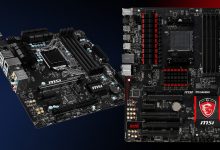Software and Storage

Index Of The Blog
Software and Storage
Radio Frequency Identification (RFID) is a system that stores and retrieves data using devices that are called tags. The RFID technology is used to recognize the identity of an object, person or animal by making use of wireless transmission technology. Notably, an RFID tag refers to a small sticker that can be easily incorporated into an object, person or animal. The main components of an RFID system are a tag, a reading system, and a database. Software and Storage
The individual cards contain network chips that manage a network that receives and responds to requests from radio trans-receivers. Tabbles is one of the most current software that uses RDFID technology to transmit data. The more information you have on this subject can be found from experts provided by myessayplanet
Tabbles
Tabbles is software that can read information from a tag, file or email and bookmarks with a design to help in the organization of data. It separates files from folders, which makes their location easier. This software makes it easier to retrieve files or folders, especially when one doesn’t remember their whereabouts. Tables allow for a combination of tags easily and make it easier to find a file notwithstanding the location of the folder wherein it is stored.
In case the data is not located on the local disk, that is, if it is externally archived the software can identify the drive that needs to be connected to determine the file. The software is available freely for download from the Tabbles website. It has a trial period, after which the user is prompted to register the software by paying to the website’s official website using a smart card.
FileTrail
FileTrail is a world-class advanced software that uses RFID technology to offer management solutions to enterprises worldwide. It is primarily used for assets and personal effects tracking to provide real-time, efficient and progressive services. The software is browser-based, and it automates record management solutions and file tracking. The software is installed in the provider’s servers, and it can be accessed from anywhere without necessarily having to install it in one’s workplace.
Markedly, the Software development companies come with DeskPad, DeskTracker, and FileTrail- packages that make use of RFID technology to read big stacks of files while checking in and out at the same time. The DeskTracker is used in attended file rooms to enhance checking in and out of massive volumes of data while DeskPad is attached to any PC to identify and tag incoming files for check out for a particular staff. FileTrail-RF is useful in file tracking by making use of tags inside files that can locate any data from a distance making it easy to locate and access each file’s history.
Chronological progression of storage devices
Instances that Spurred New Development
Since the emergence of computing technology, data storage has increasingly become a growing concern. Large junks of data are generated on a daily basis, and this data needs to be stored. Additionally, technology is advancing, and new formats of data have been discovered. These require advanced storage systems.
All these developments call for advancement in storage devices. Traditionally, data used to be stored in giant electronic banks, which had a limited storage capacity despite their large sizes. The inconveniences caused by these immense trunks of data banks called for the development of new, modern storage devices that are smaller in size but which can handle gigabytes of data.
The Effect on Productivity and Storage Practices
With the ability to store vast junks of data on small storage devices, data can be easily centralized, which makes collaboration more efficient and more accessible as data can be easily accessed from a central location. Ultimately, this improves business productivity. For businesses, this means that a warehouse management system can be initialized and maintained, consequently increasing productivity.
Furthermore, with storage devices being more scalable, data is getting more secure than we would think. Cloud services can store sensitive information, which is backed up on other servers online which have incorporated with data securing tools which can allow for administrator to manipulate data remotely if need be. By the use of these advanced security tools, cloud service providers ensure that authorized users only access data.
The Impact on Users in a Professional Environment
For many internet users, the background nature of the data they interact with daily is nothing to worry about, nor do they ever sit down to consider where the information they produce daily goes to. However, whether conscious of it or not, every internet user is generating data that contributes to the large junk of data that lives in the clouds and which runs all digital activities around the world. When streaming videos, doing e-shopping, searching for signals to making phone calls, we are all leaving long digital trails.
While the data may not be visible, or the whole issue looks impersonal, it is most definitely in existence and occupies space on physical space in a given data house. In summary, the developments on storage techniques are profoundly impacting the everyday user of the internet, and the impact of which, whether felt or not, most surely exists. With the higher scalability and modularity of data, cloud service providers are shaping their services to fit into the users’ expectations as defined by their various positions.













